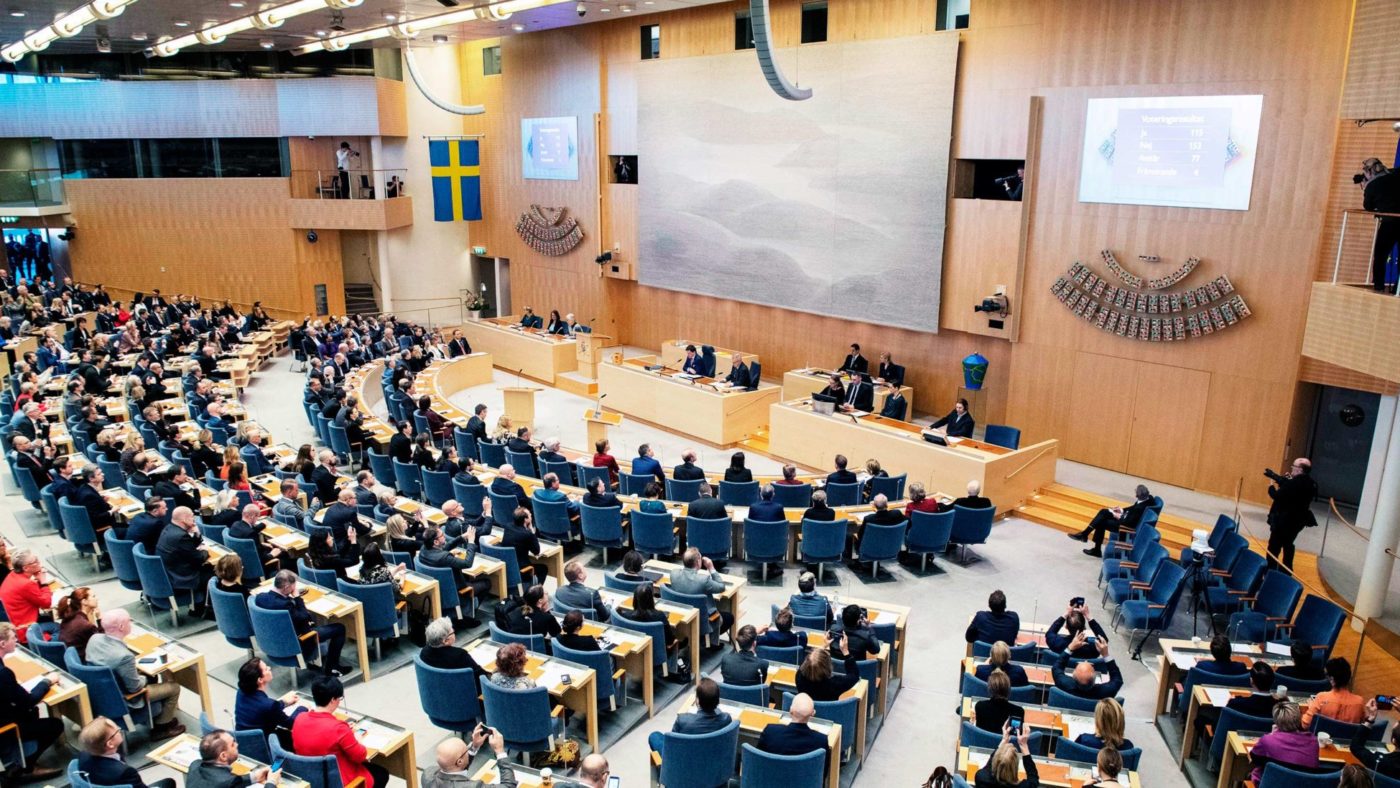About a month ago I asked if Sweden would ever get a government. On Friday, we finally got one – just 131 days after the election that took place in September. In the end, Stefan Löfven, the leader of the Social Democrats, remains the prime minister and will govern together with the Greens. However, an interesting four years lie ahead as more MPs voted against him than in favour.
The vote on Friday resulted in 115 votes for Löfven and 153 against. Rather than being required to have a majority, Sweden’s prime minister only needs a majority not to be against them: in this case that meant the 153 needed to be 175.
Crucially, a total of 77 Centre Party and Liberal MPs abstained. Both parties had been part of the Alliance of centre-right parties (the rest of whom voted against Löfven), but opted to abstain on Friday’s vote in exchange for a series of policy concessions — 73 different measures, to be precise.
Annie Lööf, the leader of the Centre Party, and Jan Björklund, the leader of the Liberals, claim it is a great deal as it will bring liberal reforms to much needed areas. In truth the reforms may not be as wholesale as they might have hoped — 46 of the 73 proposals are promises of “investigations” and a further 14 are to be prepared by authorities whose managers are appointed by the Social Democratic government.
The other Alliance parties call the deal a betrayal, and rightly so. Throughout the campaign Lööf and Björklund promised that a vote for their parties would be a vote to remove Löfven. And while the Centre Party and the Liberals claim they only struck the deal in order to reduce the influence of the Sweden Democrats (SD) — a populist, anti-immigration party which is the third largest group in the Riksdag — the move seems to have had the opposite effect, galvanising support for the SD. In September’s election, SD received 17.5 per cent. According to a poll conducted after the deal on Friday, they would now be closer to 20 per cent.
The horse-trading has also backfired on the Centre Party and the Liberals. The Liberals, who got 5.5 per cent in the election, are polling at a record low 3.6 per cent — not even enough to get across the 4.5 per cent threshold to get parliamentary seats. The Centre Party is down from 8.6 per cent to 6.9 per cent.
After winning the vote on Friday, Löfven said that “the big winner is Sweden”. Unfortunately, that is not the case. Sweden is in dire need of genuine liberal reforms. These 131 days of political chaos and broken promises have left Swedes completely lacking faith in politicians and the political system as a whole.
On Thursday, a poll revealed that seven out of ten voters have less confidence in politics now than before the election. More than half says their confidence has “fallen sharply”. Unsurprising perhaps, but deeply disturbing.
The big winner, as usual when it comes to Swedish elections, is the Social Democratic Party. The deal has not reduced their support according to the polls and they will remain in power for four more years. But at what price?


